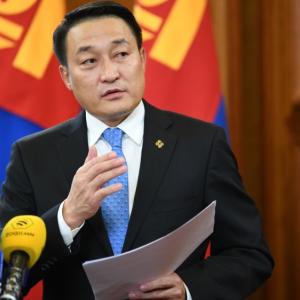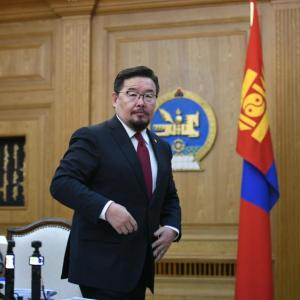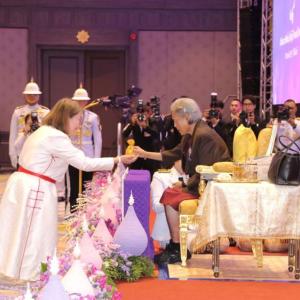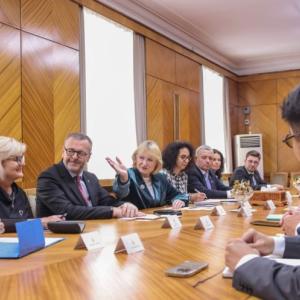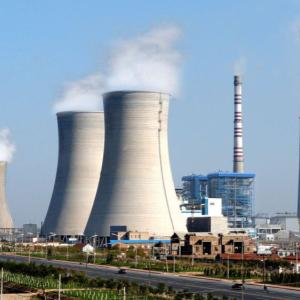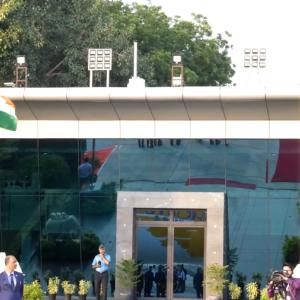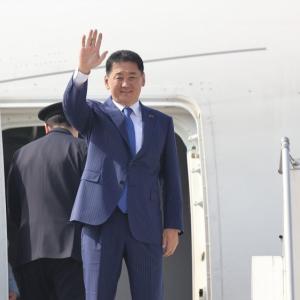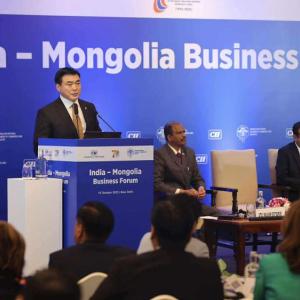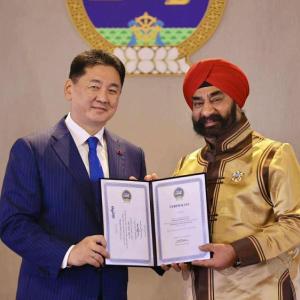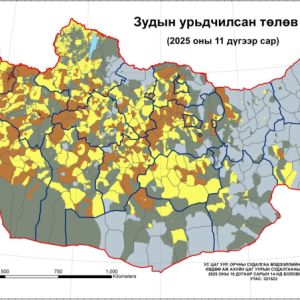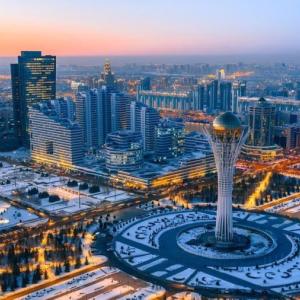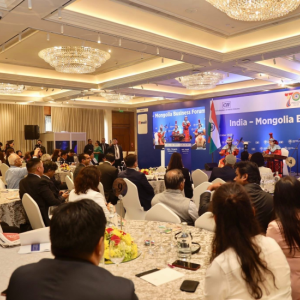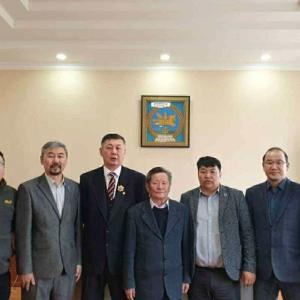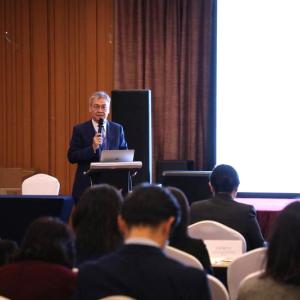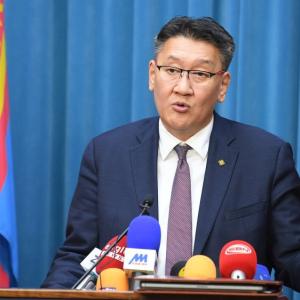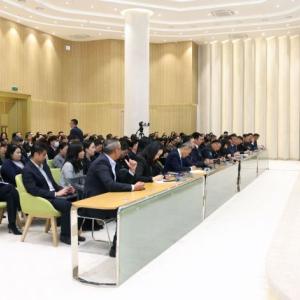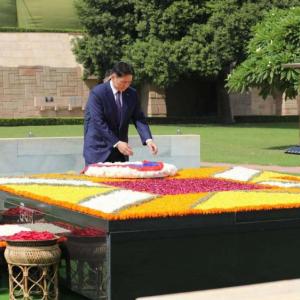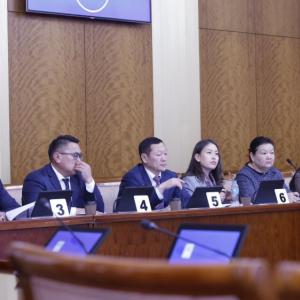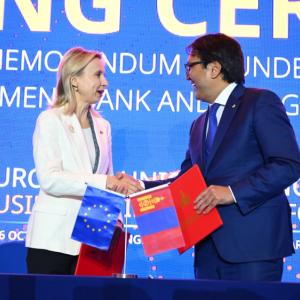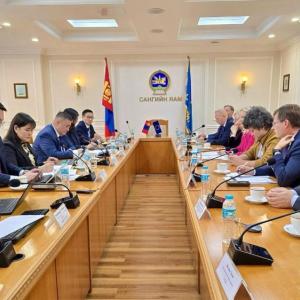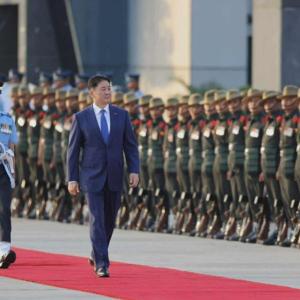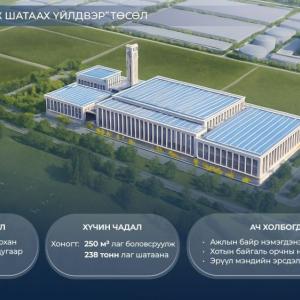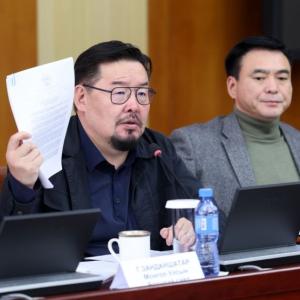Green Development model to be defined by Mongolia
The Mongol Messenger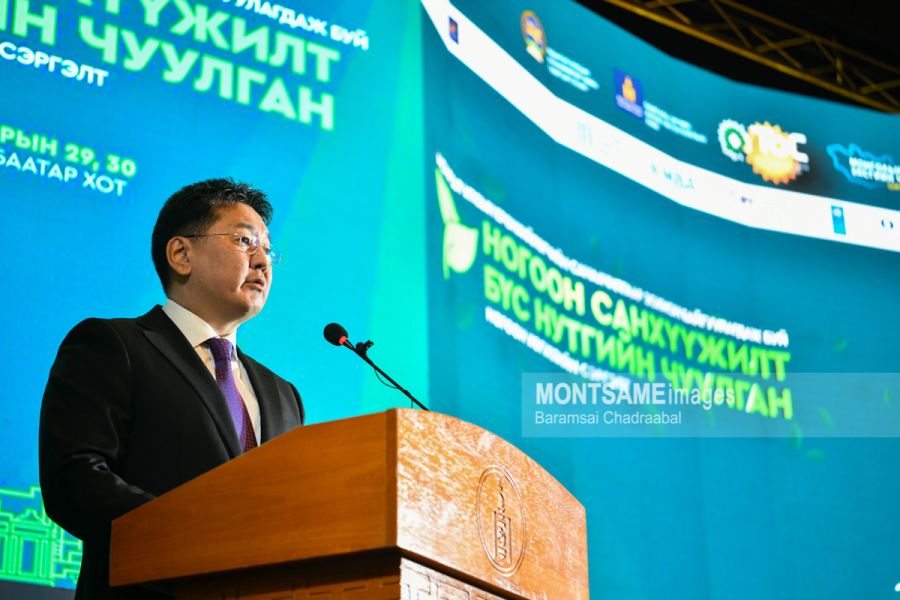
Ulaanbaatar /MONTSAME/. By 2030, about 130 million people will suffer from hunger due to the force majeure event such as drought and dzud caused by climate change. According to the relevant estimations conducted by the international organizations, this figure will reach 200 million in 20 years. During the 26th Conference of the Parties to the UN Framework Convention on Climate Change Secretary-General of the United Nations Antonio Guterres said that global warming should be kept at 1.5 degrees Celsius in order to avoid the above-mentioned risks, and the estimation is based on irrefutable evidence.
Nationally Determined Contribution (NDC), which was approved in 2016 in Mongolia, aims to reduce its greenhouse gas emissions by 22.7 percent by 2030. During the UN Climate Change Conference 2021 held in Glasgow, UK, President of Mongolia U.Khurelsukh announced that it is possible to increase the target level to 27.2 percent by introducing advanced technology and innovation and increasing green financing. To seek opportunities to achieve the goal, the 'Green Financing Regional Forum' was organized on April 29-30 at the initiative of the President of Mongolia. Organized ahead of the Mongolian Economic Forum 2022, the forum was attended by 800 local and foreign delegates to discuss climate change combat and green finance development under the seven main topics.
The average air temperature rise in Mongolia is twice the world average
During the forum, the President stressed, “Over the past 170 years, global surface temperatures have risen by 1.09 percent, and many biological species are becoming extinct.
Despite emitting 0.1 percent of the world's greenhouse gas emissions, Mongolia is one of the countries that are the most affected by climate change.
Specifically, climate change has intensified over the past 80 years in Mongolia, with the average air temperature increasing by 2.25 degrees, which is twice the global average. In Mongolia, 76.9 percent or 120 million hectares of the total territory is affected by desertification, and half of the total area is classified as severely desertified. Compared to 1990, the number of climate change-related natural disasters has tripled in Mongolia in the last decade.”
He also emphasized that a national movement is underway to plant and grow a billion trees by 2030 with the purpose of increasing greenhouse gas absorption, reducing soil degradation and preventing water scarcity, noting the great importance of the leadership of international investors and the domestic financial sector to finance green development.
The ‘One Billion Trees’ national movement set out in the green development objectives of the ‘New Revival Policy’ is one of the key and comprehensive solutions to mitigate desertification, protect against sand migration and take actions against climate change. The President of Mongolia also noted that with the successful implementation of the ‘New Revival Policy’, a green development model will be defined in line with the international trends.
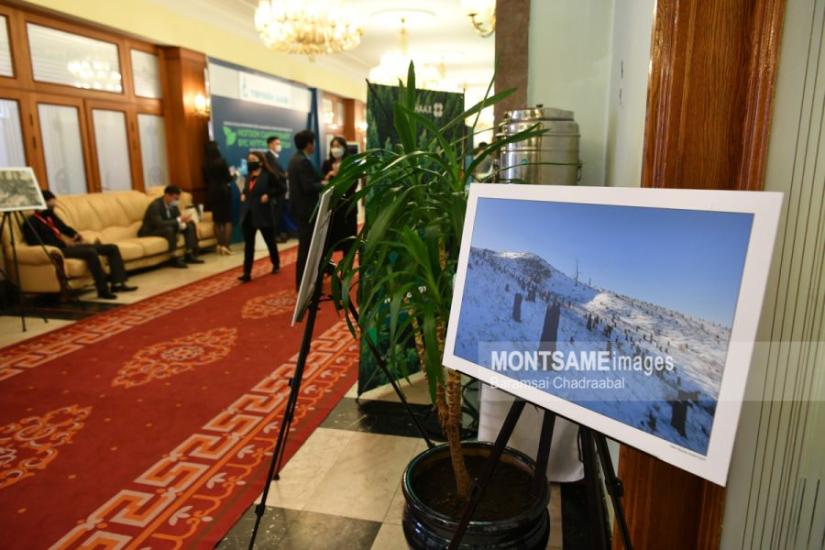
USD 6.3 trillion is required for Mongolia to reduce greenhouse gas emissions
In order to achieve the 2030 Agenda, USD 3.3-4.5 trillion needs to be annually mobilized by countries, a study revealed.Participants of the Green Finance Regional Forum, which was organized at the initiative of the President of Mongolia on March 29 and 30, noted that despite the commitments are increased towards green financing, countries are failing to reach the goal, with an annual funding gap of USD 2.5 trillion. In addition, it was emphasized that the outbreak of COVID-19 and the international conflicts have a negative impact on global economic development and are a reason to reverse the goal of combating climate change and reducing greenhouse gas emissions.
No country or region can solve global warming alone, and all countries need to work together. During her remarks delivered at the forum, UNDP Associate Administrator Usha Rao-Monari emphasized that a multi-pillar, inclusive, sustainable, and green financial eco-system must be developed as Mongolia seeks to build a strong, diversified, green and prosperous economy in the next 30 years in line with the Vision-2050. She further noted that it can be advanced by creating an ‘enabling environment’ for investment and promoting public-private partnerships to mobilize the additional resources needed to bridge the financing gap for the SDGs.
Since the ratification of the Paris Agreement on Climate Change in 2015, 192 countries have acceded. Mongolia set a goal to reduce its greenhouse gas emissions by 22.7 percent by 2030. Specifically, the country aims to reduce greenhouse gas emissions from the energy sector by 49.4 percent, the construction sector by 4.9 percent, the transport sector by 6.2 percent, the agricultural sector by 31.3 percent, and the industrial sector by 7.6. Minister of Tourism and Environment B.Bat-Erdene presented that the measures and activities are being carried out such as using renewable energy sources, insulating prefabricated apartments in Ulaanbaatar, switching to Euro-5 standard fuel, regulating and reducing the number of livestock, and recycling waste.
It is estimated that Mongolia will need USD 11.5 billion to meet its nationally determined contribution target. Of this, USD 6.3 billion is required to reduce greenhouse gas emissions and USD 5.2 billion to adapt to climate change. An action plan to implement this goal was approved by the Ministry of Environment and Tourism in 2021, and in 2021-2025, 72 activities with 24 objectives are planned to be carried out in three areas. To date, projects and programs worth USD 436 million were approved by the Green Climate Fund, with USD 70 million of this amount was spent for climate change mitigation and USD 23 million for adaptation. USD 342 million is being spent on funding projects and programs aimed at slowing down the impact of climate change and adjusting to climate change. The Minister noted that this financing accounts for 13 percent of Mongolia's nationally determined contribution to the goal.
Green bond is an ideal option to increase green financing
Mongolia cannot afford to spend USD 11.5 billion on its national contribution. It is important to attract investment from the private sector, investors, international organizations and partner countries, as it is not possible for Mongolia to fully finance the fight against global warming in Mongolia. For example, the participants emphasized that attracting funding with green bonds, which are relatively new to Mongolia but are already commonly used internationally, is the best practice. In her speech, EU Ambassador to Mongolia Axelle Nicaise expressed that the EU, as a world leader in sustainable financing and a key issuer of green bonds, is proposing a credible EU green bond standard to support the expansion of the green bond market in Mongolia.
Countries are allowed to issue green bonds based on a number of factors, including evaluating and determining the importance of funding. In an interview with MONTSAME, CEO of Golomt Bank Norihiko Kato highlighted that green bonds are a financing instrument that provides a great opportunity not only for banks and financial institutions, but also for companies and enterprises to contribute to the fight against climate change.
Aside from green bonds, there are many types of mechanisms being implemented for green financing worldwide. For instance, Japan implements the Joint Crediting Mechanism (JCM). In the framework of the goal to fight against climate change, the country’s government supports green financing through grants. There are also various works being carried out that involve bringing together financial services and environmental rehabilitation. For example, when issuing loans with discounted interest rates in cooperation with the Ministry of Environment and Tourism, Khan Bank imposes an additional requirement: to plant five trees if they are an individual, 50 trees if it is an organization. As for Golomt Bank, they currently offer eight types of green loans for purposes, such as renewable energy, green construction, works to prevent and reduce pollution, and sustainable forest management. The bank’s latest major decision was to establish a fund to support the One Billion Trees national movement.

The fund to annually contribute MNT 2 billion for One Billion Trees national movement
One of the most efficient methods to mitigate climate change and desertification is to plant and grow trees. Thus, a nationwide movement is being launched in Mongolia to plant one billion trees, announced President of Mongolia U.Khurelsukh during the plenary session of the 76th UN General Assembly on September 22, 2021.
Countries of the world ran various environmental campaigns to fight against desertification and global warming, carrying out works to plant several billions of trees from many years ago. For example, China launched a program to plant 100 billion trees 20 years ago. Furthermore, while Vietnam plans to fulfill its pledge to plant one billion trees by 2025, Pakistan and Ethiopia have plans to plant 10 billion trees and 20 billion trees by 2024 respectively. As for Mongolia, the One Billion Trees national movement was officially launched on October 4, 2021. The main leverage for successful implementation of the movement is financial resources. Thus, a fund was established to support the One Billion Trees national movement at the initiative of the member organizations of the Mongolian Bankers Association, which was announced during the Green Finance Regional Forum.
The fund aims to create a structure and system to ensure sustainable financing for afforestation, planting and growing trees, and other works to protect the environment, with the banking association members annually donating no less than MNT 2 billion. Moreover, a certificate on increasing the banking sector’s green loan portfolio to 10 percent, and disbursing MNT 5.2 trillion was presented to Chief of Staff of the Office of the President Ya.Sodbaatar by CEO of Mongolian Bankers Association L.Amar. The fund’s financing will consist of donations received from banks, non-banking financial institutions, businesses, and citizens, while its steering committee will discuss and approve the projects and programs to receive financial support. The steering committee has been made up of representatives of the Mongolian Bankers Association, Mongolian Non-Bank Financial Institutions Association, and other donors as well as independent members.
During the forum, foreign representatives expressed their stance on the movement. “Initiatives are made by heads of states and governments on global pressing issues. As for President U.Khurelsukh, he has taken the model step of leading the works alongside initiating the One Billion Trees movement,” highlighted IFC Country Representative Rufat Alimardanov.
“As fighting climate change is not only a pressing issue for Mongolia but also worldwide, the One Billion Trees movement is significant for calling for the active participation of the public,” noted Ambassador Extraordinary and Plenipotentiary of the U.S. to Mongolia Michael Klecheski. He also highlighted that it is fully possible for the movement to be realized.
“Japan and Mongolia launched research on saxaul forest rehabilitation in the Gobi region in 2019. By creating correlation between the research project and the One Billion Trees national movement, the works will become a new sector for bilateral relations,” said Ambassador of Japan to Mongolia Hiroyuki Kobayashi.
ADB Country Director for Mongolia Pavit Ramachandran said, “ADB will be consistently involved in successfully implementing the One Billion Tree movement. I am delighted that Mongolia is moving in the direction of cooperation between the government, the private sector, and citizens for the movement. Choosing the right tree and technology for the specific location is important. In order to organize afforestation works, it is a correct decision to establish a long-term financial source. Companies and organizations generally look for a certain amount of profit for their investment in state and insurance funds. Thus, it is necessary to determine who will be receiving how much profit. Our bank will provide consulting services for the One Billion Trees movement, taking possible solutions for the aforementioned issues into account.”
During the forum, 17 entities and professional associations of the banking and financing sector pledged to plant and grow 88.6 million trees.
Earlier, administrations of the capital city and 21 provinces pledged to plant and grow a total of 680 million trees and 21 largest national companies signed a certificate as an expression of joining the movement, and pledged to plant a total of 608.5 million trees.
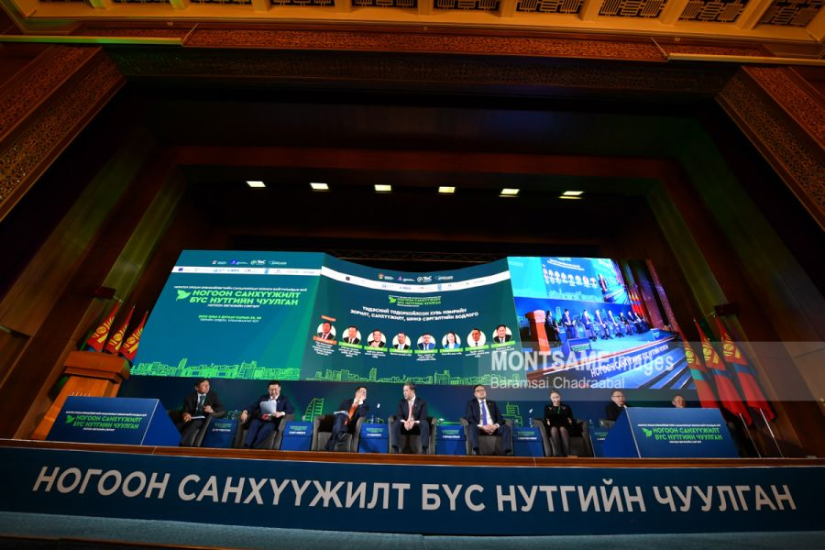
National Sustainable Finance Roadmap adopted
The main outcome of the Green Finance Regional Forum that aimed at reducing GHG emissions and combating climate change, was the issuance of a call for regional cooperation on desertification and set of guidelines for the Mongolian Economic Forum-2022, and the adoption of National Sustainable Finance Roadmap.
A Call for collaboration in mitigating climate change and combating desertification states that it is of utmost importance to expand not only regional, but also the widest possible collaboration in order to tackle the climate-induced challenges including reducing greenhouse gas emissions and eradicating poverty in the context of adapting to the adverse impacts of climate change and meeting the sustainable development objectives.
Mongolia is calling for the adoption and implementation of an integrated program on reducing land degradation, and combating desertification as well as sand and dust storms in the Northeast Asian region, joint implementation of the ‘Green Belt’ project to establish a shelterbelt forest against sand movement in southern and northern parts of Mongolia and the People’s Republic of China respectively, as well as the establishment of a platform for information and knowledge exchange and capacity building in reducing desertification and land degradation, establishing shelterbelts, increasing soil fertility and introducing environmentally friendly advanced technologies. It also calls for the implementation of joint international and regional projects and programs to combat desertification and transfer technology for reducing sand movement.
One of the highlights of the forum was adopting the National Sustainable Finance Roadmap. B. Dulguun, Head of Securities Department, FRC emphasized that a goal has been set to increase the green financing in the banking sector to 10 percent by 2030 within the framework of the National Sustainable Finance Roadmap signed by four organizations of the country’s Financial Stability Council- the Ministry of Finance, Bank of Mongolia, Financial Regulatory Committee and Deposit Insurance Corporation of Mongolia.
The National Roadmap for Sustainable Finance is a plan to ensure integrated and multilateral cooperation in line with target levels of Mongolia's sustainable development and climate changes, to develop a sustainable financial system by 2030, as well as that has outlined the necessary strategic directions and activities. The Roadmap consists of six main chapters and 25 sub-activities.
The Mongolian Economic Forum aimed at discussing the challenges faced by Mongolian economy and society, and solutions took place on April 7-8. The set of guidelines presented at the Forum has three chapters. The first chapter includes 13 objectives about increasing the green financing, developing public-private partnerships, actively participating in the international associations and alliances for sustainable finance, and creating tax incentives for the import of green technology as well as others. The second chapter includes 7 objectives about intensifying regional cooperation to mitigate climate change and combat desertification and dust storms effectively, seeking Mongolia’s possibility to join the Asian Super Grid to increase renewable energy sources. The third chapter states that the necessary financing for implementing the ‘Revival of Green Development’ will be included in each year’s state budget, opportunities for multiple financing sources will be studied, and cooperation with international banks and financing institutions as well as the private sector will be expanded.
Ahead of the Mongolian Economic Forum-2022, discussions were held on the six topics of ‘New Revival Policy’ being implemented by the Government. The most recent discussion was the Green Finance Regional Forum. Prior to it, discussions ‘Revival of Energy’ and ‘Revival of Government Productivity’ took place on March 21 and 22, ‘Revival of Industrialization’, ‘Revival of Urban and Rural Areas’ on March 24 and 25, as well as a discussion ‘Revival of Border Ports’ was held on March 28.
The article was published in the April 2022 edition of the Mongolia Today magazine.
 Ulaanbaatar
Ulaanbaatar






